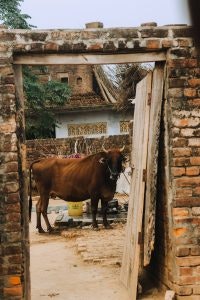We gathered 12 fun facts about India, highlighting that India is the most vegetarian country in the world and produces 75 out of 109 recognized spice varieties.
I first visited India as an experienced backpacker and quickly learned two important things.
First, budget hostels in India differ significantly from those in Europe. Second, the friendliest people can be the ones to watch out for.
Visiting India was a transformative travel experience that taught me a lot about the country and myself. Here are some key facts about India to get us started:
| Key Facts About India | Details |
| Population | 1,462,083,447 |
| Official Languages | Hindi, English |
| Currency | Rupee |
| Capital | New Delhi |
| Area | 1,269,219 sq mi (3,287,263 sq km) |
| Main Religion | Hinduism (roughly 80% of the population) |
Let’s explore more fun facts about India to inspire your next transformative trip abroad!



